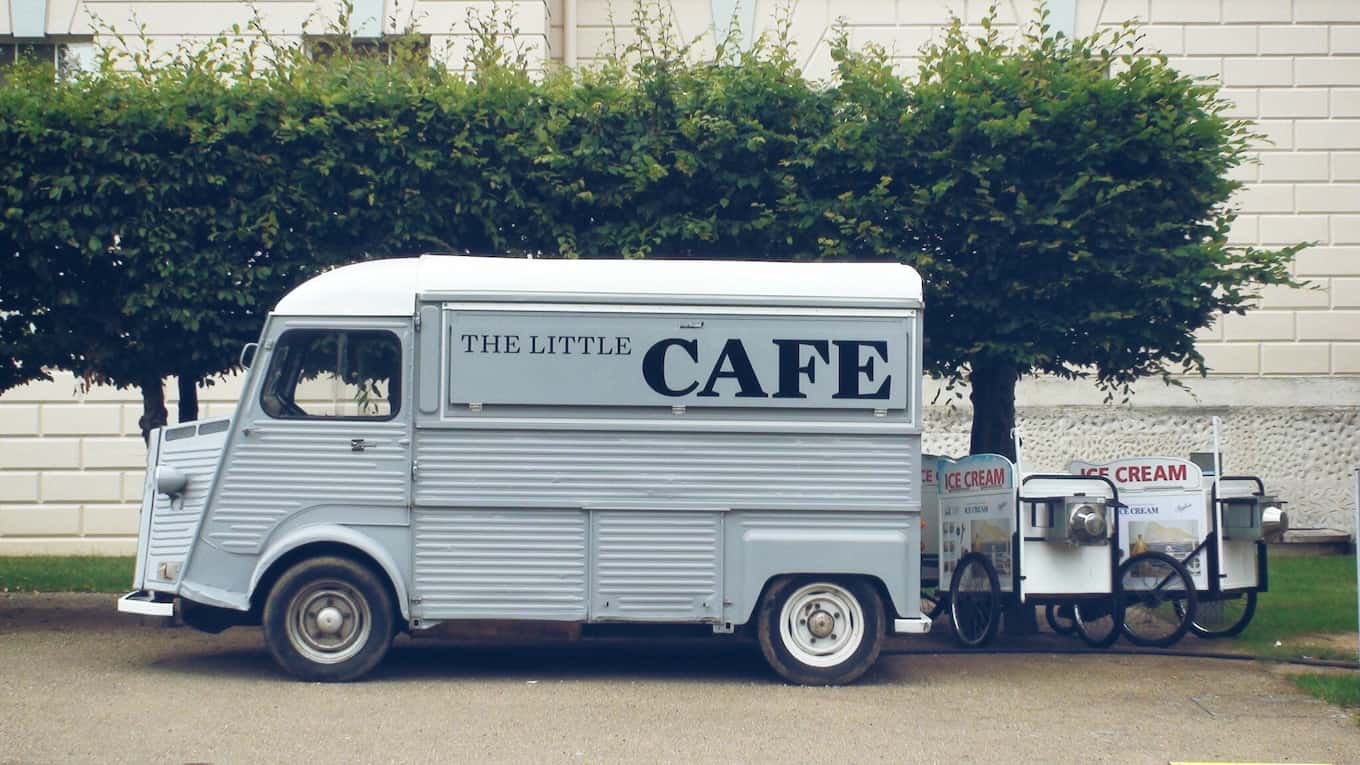Food trucks are one of the few businesses where location is absolutely critical to success. For merchants selling meals on wheels, it really is all about location, location, location. While food trucks have the freedom to go wherever hungry customers are, sometimes that’s easier said than done.
Food truck sales can fluctuate wildly depending on a number of factors, most of which are contingent on location. Analysis by CARTO of food trucks in New York City discovered that trucks that set up in the West Village made $5,234 in average revenue per week—while trucks in Corona Park, Queens made $6,128 in average revenue per week. The 10 miles between neighborhoods in the same city can make a nearly $1,000 difference in revenue. In an industry with slim margins, that number can make or break your business.
Where a food truck sets up for the day influences their foot traffic, their competition, their inventory management, and their customer loyalty. Whether you are a brand-new food truck business seeking to build a following, an established food truck looking to expand your fleet, or a restaurant launching a food-truck version of your menu, here are the factors to consider when selecting a location.
Learn about permits, zoning, and parking fees
First and foremost, find out if you’re allowed to park in a certain area. Some cities and towns restrict food trucks to certain zones, or have limits for how long you can park in one place. Chicago, for instance, prohibits food trucks to park within 200 feet of a restaurant. In Washington DC, food trucks are banned from parking before 9:30AM, and may not remain in the same spot for more than two hours (even if they pay at the meter). Those who disobey parking regulations face fees that quickly add up.
Some cities will also require food truck vendors to get certain permits. Of course, as a small business, you will need an EIN and a business license. In addition, food trucks need a vehicle license, a food handler’s permit, a seller’s permit, and fire certificates to operate in certain areas. Check this list for all the zoning and permitting regulations related to your city.
Figure out where the foot traffic is
“Go where the people” are sounds straightforward, but it often isn’t so simple. Head downtown to a financial district and you may find yourself competing with other food trucks for parking and hungry customers. Find space too far away from the lunch crowds and you may lose out on the lunch rush altogether. How do you find the perfect sweet spot where you can capitalize on foot traffic without having to duke it out with other food trucks?
One tool many merchants use is Clover Insights. This app gives business owners actionable insights to manage their food trucks more intelligently. Using Clover Insights, you can see how your business compares to similar businesses in your neighborhood, check out foot traffic patterns in different locations, and more.
There are other key metrics that can give you insight into where to station yourself during lunch. CARTO’s analysis showed that census data, like population, and median rent prices aren’t reliable predictors of sales. Instead, use a tool like like LocationGenius which gives you a good estimate of foot traffic using a mix of cell phone signal and physical sensors. You can also base yourself near a popular attraction and use Google Maps’ live update tool to see when foot traffic dips and peaks throughout the day.
Establish a schedule to boost customer loyalty
It’s difficult to build consistent sales and customer loyalty when a food truck moves to a new location every day. Establishing a regular schedule gives customers the opportunity to plan ahead and anticipate your arrival. It also gives you as a food truck owner some level of risk management; if the new spot you try on Monday’s is a bust, you have four other locations lined up where you can reliably depend on customers to turn up. Having a location schedule can help with inventory management, give you the chance to partner with other truck, and build customer loyalty. Clover Rewards is a good way to reward your regulars and build a long-lasting, profitable customer base no matter where you park.
Partner with special events
Farmer’s markets, festivals, and other events are a great opportunity for new food trucks or restaurants testing a food truck concept to get immediate feedback. Foot traffic at music festivals, sporting events, and seasonal markets is all but guaranteed. Though some events charge steep fees for parking onsite, try to find space leading to and from the venue where you can still catch a lot of foot traffic. If you’re worried about competition from other trucks, start to tease a promo in the days leading up to the event to generate excitement. Clover Promos is a good tool that gives food trucks the ability to send spontaneous promotions to their customers’ phones, driving food traffic in real-time. Launch a promo to get the word out, and see how long it takes you to sell out your whole menu.
Go off-script with your scheduling
Sometimes, the best location isn’t the most obvious one. Many food trucks flock to food truck parks, farmers markets, and business districts. But those who think outside the box may be able to capitalize on a previously untapped market. One entrepreneurial college student in Massachusetts parked his food truck right outside the college bar when it closed at 2AM—and sold out of tacos nearly every Friday and Saturday night. Gas stations can be other unexpectedly lucrative places to set up shop. Here, you can take advantage of workers on the go (think construction workers, law enforcement, or salespeople who travel frequently) who end up purchasing a sad hot dog from the gas station while filling up their tank. Clover Flex is a great way to accept payments at all times—the charge lasts 8 hours, and it even works when you’re offline. No matter whether it’s 2AM outside a nightclub, or 3PM near a rest stop, you can keep on serving up delicious food to hungry people.






